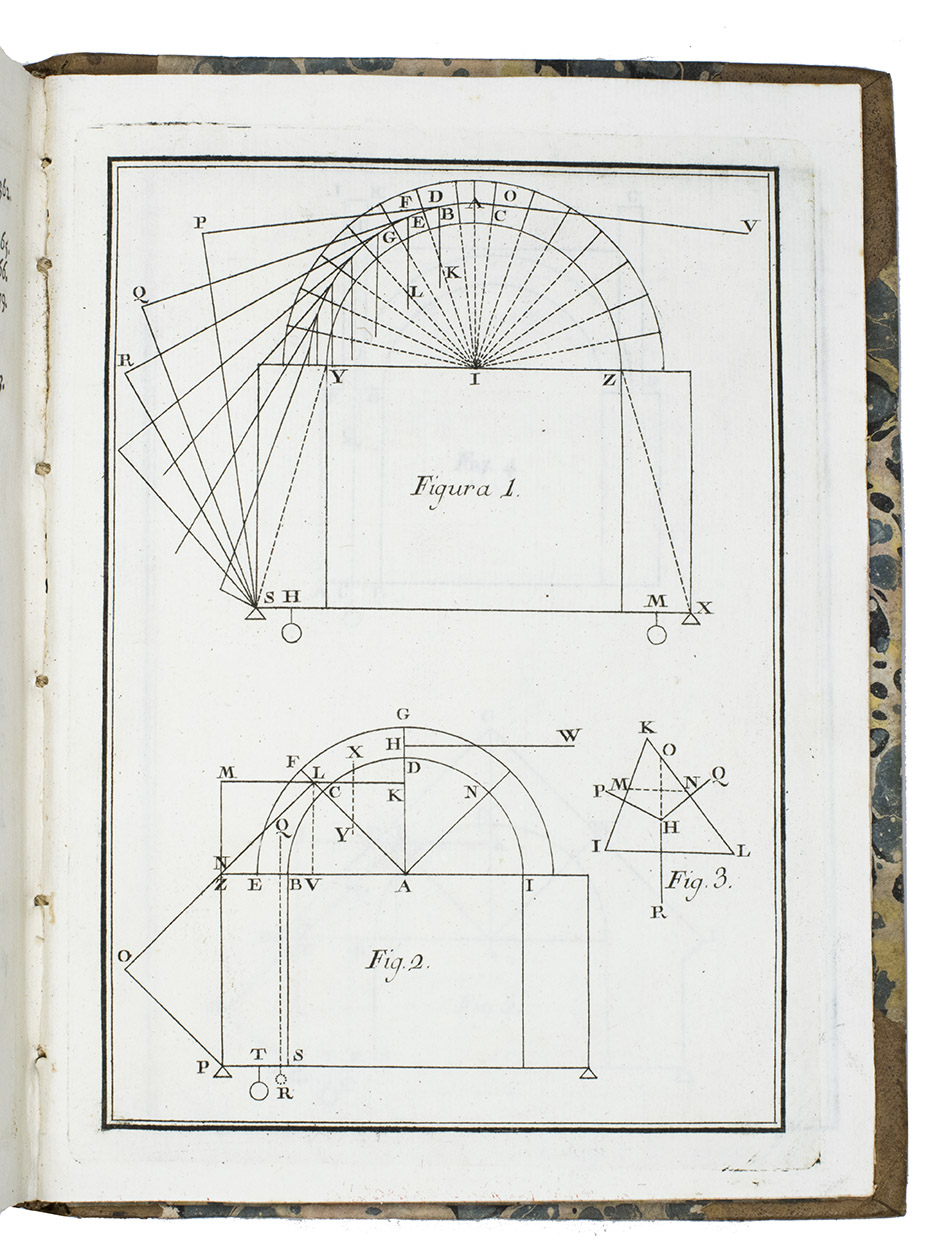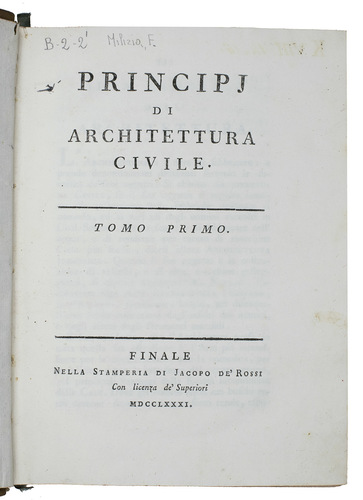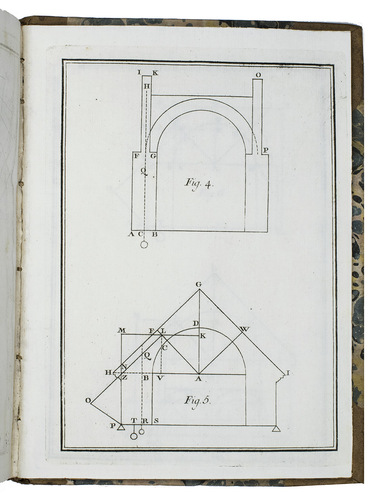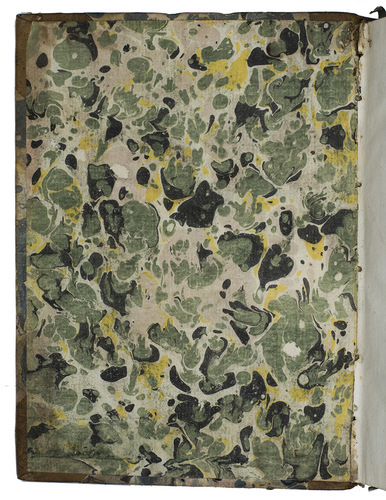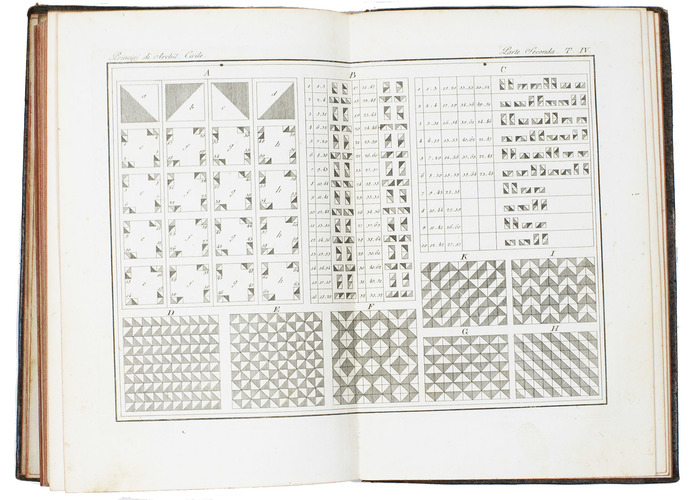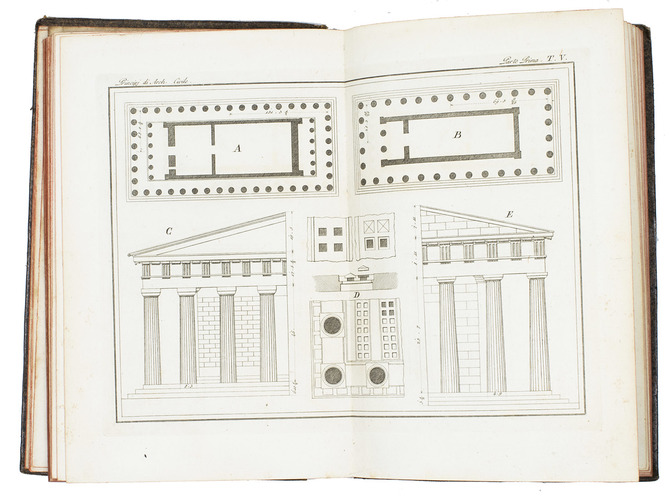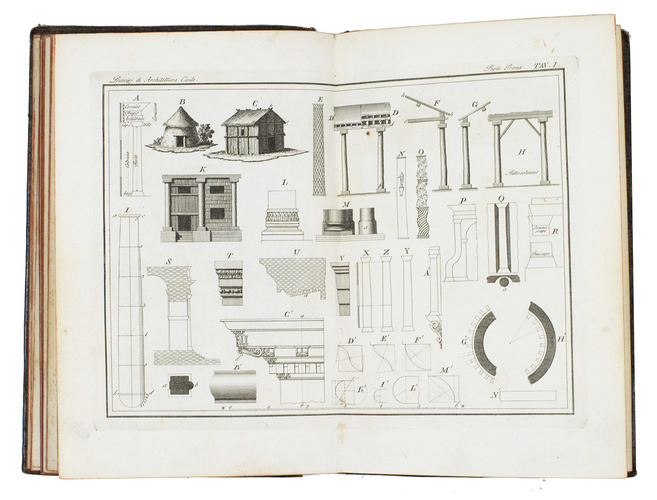MILIZIA, Francesco.
Principi di architettura civile. Finale, Jacopo de' Rossi, 1781. 3 volumes. 4to. With tables of proportion in text and on a large folding leaf, and 18 architectural measured drawings and perspective and other views of domes, pinnacles, arches, curves and spires on 8 full-page engraved plates, all bound in the third volume.
Contemporary half sprinkled calf, marbled sides, gold-tooled spines with black morroco spine labels, red sprinkled edges.
With:
(2) CIPRIANI, Giovanni Battista. Indice delle figure relative al Principi di architettura civile di Francesco Milizia.
Rome, Nella stamperia Salomoni, si vende da Giov. Pietro, 1800. 8vo. With numerous illustrations on 27 double-page plates, illustrating Milizia's work, showing architectural measured drawings and perspective and other views of buildings and details of buildings, theatres, bridges, gardens, etc., models of ornament and decoration, technical building instruments, building materials, etc. (10 plates for vol. 1, 12 plates for vol. 2, 5 plates for vol. 3). Contemporary mottled calf, gold-tooled spine with red label, red edges. 480; 515, [1 blank]; 442; 76 pp.
€ 12,500
First edition of a complete course on civil architecture, the best of the many works on art and architecture written by Francesco Milizia (1725-1798), born in Oria as a member of the best-established and richest family of the city. The impressive extent and impact of Milizia's work suggests that he devoted his life to the study of art and architecture, but that is not the case. His background was in medicine. As the author explains in his preface, architecture represents the most important science within society, civil architecture erecting temples, palaces, mausoleums, triumphal arches, theatres, fountains, gardens, etc., all signifying civilized society. Architecture presents the basis for all other arts as well, such as painting, sculpture, relief carving, perspective, ornamental arts, etc., while it is also a source of prosperity and wealth, promoting trade and commerce of building materials, and inspired scientists and artists from Vitruvius to Leonardo da Vinci, Michelangelo and Raffael.
According to Milizia, civil architecture must be: "bellezza, comodita, solidita", the three Vitruvian parts, also taught in the work in that order, making the book a wide-ranging study, beginning with the aesthetics of architecture and ending with a practical discussion of the materials and techniques available to builders. Milizias Principi exerted a tremendous influence. The first edition of the Principi was published anonymously, perhaps because of the controversy caused by some of Milizia's other works. The eight plates in vol. 3 "Delle volte", have their origins in the 1768 edition of the Vite de' piu celebri architetti, another work by Milizia. Following Milizia's death there were some important spin-off publications, the most important being a separate "atlas", fully and richly illustrating Milizias entire work in a series of 27 new plates. This "atlas", made by Giovanni Battista Cipriano (1766-1839) together with a descriptive text, is here also in its first edition. It includes an index of all illustrations with full references to the text of Milizia's three volume work, both in the present first edition of 1781, and the edition published at Bassano in 1785.
Some wormholes in spines, bottom of the spine of volume 2 of Milizia's work a little damaged. Atlas binding slightly rubbed, front hinge a little weak and with some occasional browning. Both volumes are still in good condition. Rare with Cipriani's "Atlas". I. Prozzilo, Francesco Milizia: teorico e storico dell' architectura (1971); J. Schlosser, Letteratura artistica (2nd. ed.), p. 683; Vagnetti EIIIb73, note; cf. BAL 2127 note (1813 ed.); Cicognara 566 (1785 ed.); Fowler 196 (other title by the author); Graesse IV, 523 (1804 ed., incl. the atlas).
Related Subjects:
